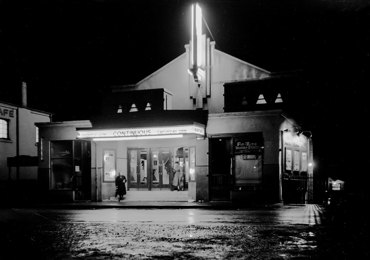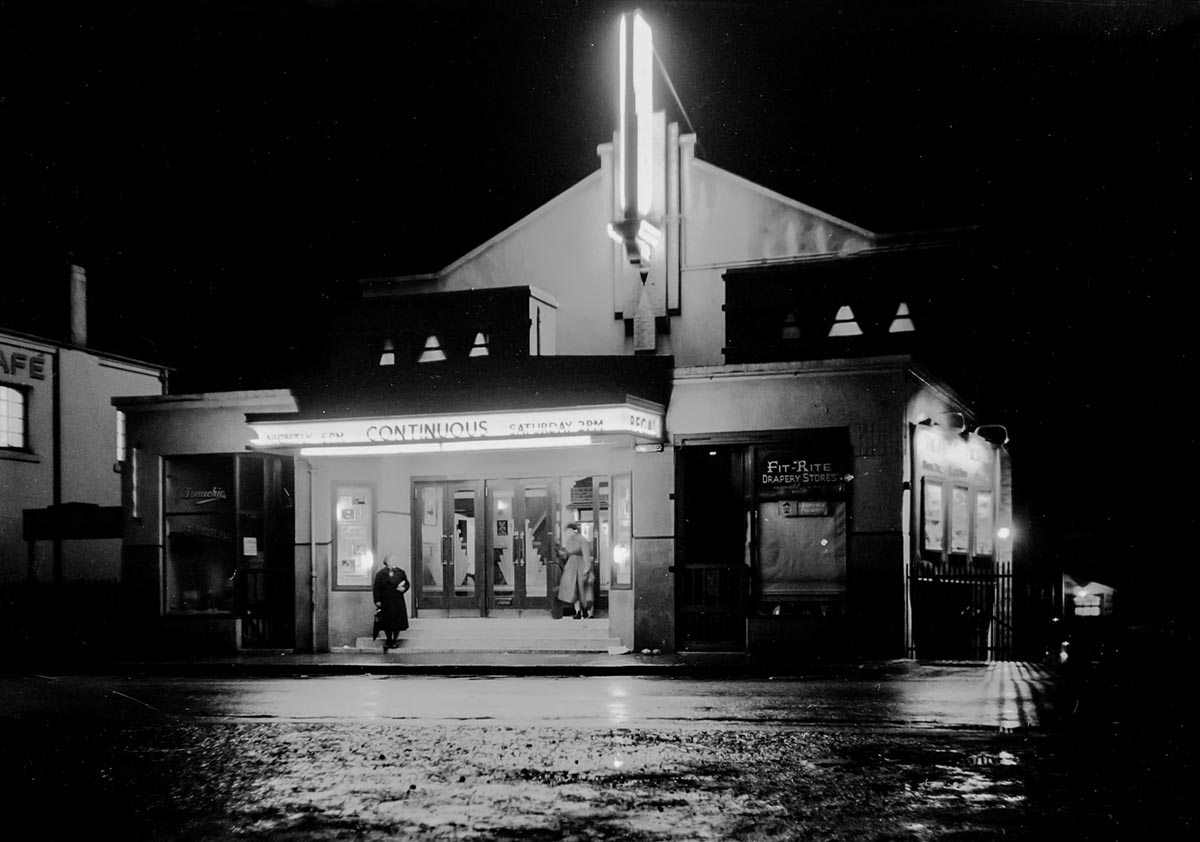Our Heritage Timeline
BLAIRGOWRIE AND RATTRAY CINEMAS

BLAIRGOWRIE AND RATTRAY CINEMAS
Let's Go to the Flicks!
While many of us have become accustomed to being able to watch films in our own homes using online streaming services such as Netflix, there is still a great demand for the experience of visiting a cinema and watching a film on the big screen in the more traditional way. Some cinemas now have their own streaming platforms allowing people to watch the same films being shown in the cinema in their own living rooms. It seems that cinema going and sofa viewing can co-exist.
What would the residents of Blairgowrie and Rattray at the start of the 20th century have made of all the 21st century innovations in the film world? Their first experience of moving pictures may well have been either at a Fairground Bioscope Show in a tent at the Fair O' Blair, or in the Town Hall, Brown Street, known as the Public Hall back then, when travelling shows would bring moving picture entertainment to the town.
It is well known that Picture Palaces or Movie Theatres originated in New York in the 1910s and 1920s, but, it is less well known that the most notable architect involved in the design of more than 300 Picture Palaces was Thomas White Lamb who was born in Dundee in 1871.
When did the first picture house open in Blairgowrie and Rattray?
MOORE'S PICTURE THEATRE AT BRIDGEND
William (Billy) Moynes or Moore was born in Liverpool, Lancashire, in 1861. In 1904 Billy married his second wife Gertrude Rowan in West Derby, Lancashire. The 1901 Census shows Gertrude aged 18 boarding at 6 Palatinate Buildings, New Kent Road, London, along with her father Arthur 49 and her sister Emma 19. All three are shown to be Professional Vocalists.
Billy Moore was a Music Hall Artiste who could play a variety of musical instruments. They involved their talented children in their entertainment business.
The 1911 Census shows the family living in Dublin, but shortly after that they moved to Blairgowrie, and in February 1913 Billy Moore started showing films in the Mission Hall in Reform Street. He then built Moore's Picture Theatre at Bridgend which opened on 4 April 1914, giving the town its first permanent picture house. It was of wooden construction and unfortunately, on Saturday 12 May 1923 the building was completely destroyed by fire.
Following this disaster, Mr and Mrs Moore and their talented family would stage performances in the Public Hall, sometimes raising funds for charity. In 1925 they tried showing films in the Public Hall, but by this time there was another very popular cinema in town.
When Billy Moore died in Dundee Royal Infirmary in 1932 aged 71, the Perthshire Advertiser reported: "There has passed from the footlights of life's stage a once kenspeckle Blairgowrie figure in the person of Mr William (Billy) Moore. Deceased was really the picture house pioneer in Blairgowrie".
QUINN'S ELECTRIC PICTURE HOUSE IN REFORM STREET
Henry Quinn and his second wife Mary McDermott were both born on County Armagh, Ireland. They came to Blairgowrie around 1875 and ran a china shop, pawn shop and rag store in Reform Street. Their two old cottages were converted into a picture house and on 11 September 1913 Provost Keay formally opened Quinn's Electric Picture House. In his opening address Provost Keay was keen to point out that the machinery was all outside the hall in fireproof buildings separated from the hall by fireproof screens.
All the up-to-date films were shown at Quinn's Picture House which made it a very popular place of entertainment in the town.
When Henry Quinn died in 1916 aged 73, their eldest son Henry and his wife Loretta Visocchi took over the running of the business.
In 1925 the original Quinn's Electric Picture House closed and was demolished. On the site a bigger and better Art Deco style Picture House was built and opened in 1927. An extension was added in 1937 to allow the cinema to seat larger audiences. In 1950 it was listed as having seating for 520. The Quinn family invested in the most modern equipment, so that the Picture House could boast of having the latest sound system and panoramic screen. Big blockbuster movies would attract large audiences.
Sadly Quinn's Picture House closed in 1983 with "Annie" starring Aileen Quinn and Albert Finney being the final film screened. The building lay derelict for a number of years and was finally demolished in 2012, making way for the Picture House Court flats.
A Facebook page is dedicated to Quinn's Picture House. People post fond memories of going to the flicks there.
https://www.facebook.com/Quinns-Picture-House-Blairgowrie-128987063850905/
REGAL CINEMA, BRIDGEND

Regal Cinema Image From Fred Oudney Collection
The Regal Cinema was formally opened on 18 July 1938. It was of modern design with a luxurious interior and seating for 750. The Managing Director was John Bannerman Milne.
A Souvenir Brochure published for the opening read: " In extending a hearty welcome to the Regal the Directors offer the residents of Blairgowrie a cinema second to none in the country and equalled by few in the world of entertainment".
The two Blairgowrie cinemas continued to attract large audiences until watching films on television in the comfort of your own living room became popular in the 1960s. Bingo was also becoming popular and J.B. Milne decided that the Regal would have Bingo instead of films two nights a week. This continued until 3 April 1970 when the last film "Cinderella" was shown at the Regal.
Bingo continued until 1993 when the Regal finally closed its doors. Demolition followed and flats were built on the site.
For more about Thomas W. Lamb and the Picture Palaces he designed visit
https://en.wikipedia.org/wiki/Thomas_W._Lamb
For more about Blairgowrie and Rattray's cinemas read "Let's go to the Pictures!" by Margaret Anton in "A Social History of Blairgowrie and Rattray" edited and compiled by Margaret Laing.
Previous Page
